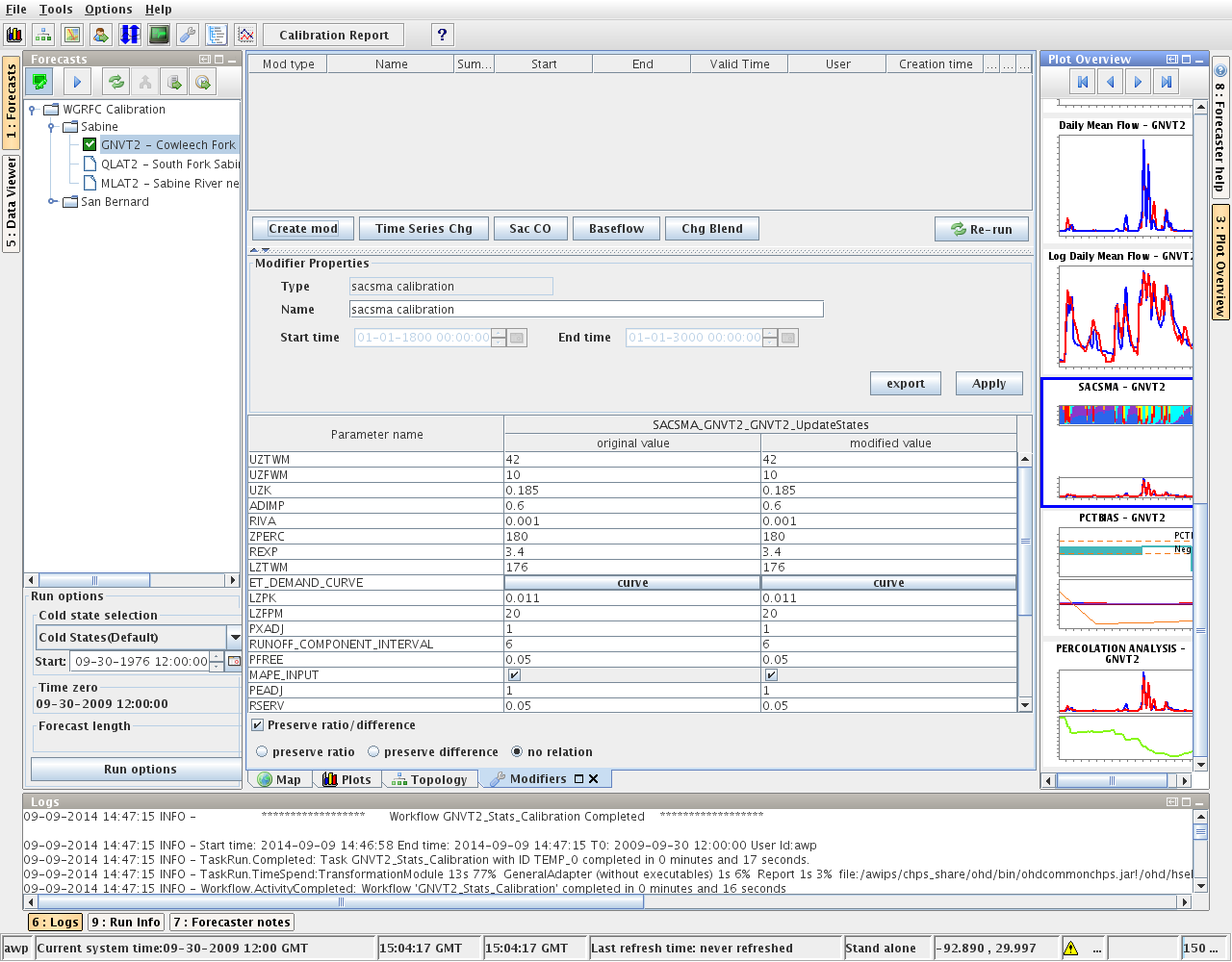3.3 Calibration Methods
The method used for calibrating a model depends on the model itself.
Learn which method is used for the model you are calibrating and the parameter requiring adjustment.
Two Possibilities
Segments are calibrated using one of two methods - by editing XML files or by using the Modifiers tab.
 Modifiers Tab
Modifiers Tab
Calibrate most SACSMA, SNOW-17, and UNIT-HG by manipulating parameters in the Modifiers tab.
Click here for a list of the default modifiers available.
Hint: Click the image to enlarge/shrink.
Note: The modifier names correspond to the parameter names defined in the SACSMA module parameter file.
Ask the focal point if the modifier you need does not appear in the Modifiers tab.
Rerun the segment after modifying parameters to refresh the calibration graphic.
ADIMP - additional impervious area
ET_DEMAND_CURVE - evapotranspiration demand adjustment factor
LZTWM - maximum value of lower zone tension water
REXP - exponent for the percolation equation
RIVA - riparian vegetation area
UZFWM - maximum value of upper zone free water
UZK - fractional daily upper zone free water withdrawal rate
UZTWM - maximum value of upper zone tension water
ZPERC - maximum percolation rate
Calibrate other models, such as APICONT and LAG/K, but editing the model's UpdateStates file, located in the ModuleParFiles directory.
Ask the Configuration Focal Point if you need help with this task.
APICONT (Continuous Incremental API) models soil moisture conditions on a continuous basis
LAG/K is a hydrologic routing model

